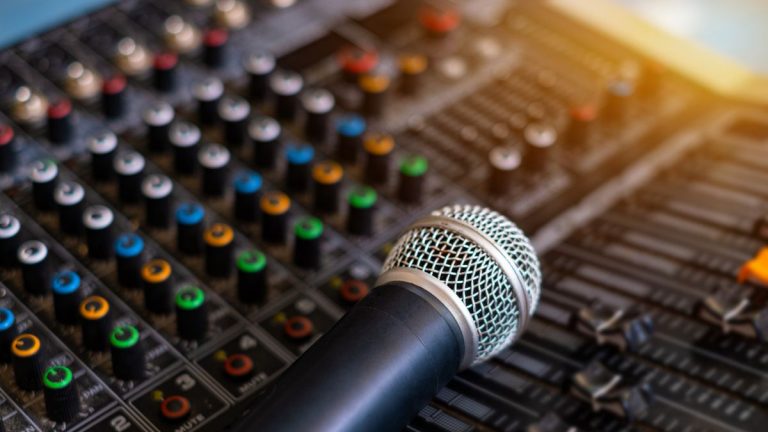When you first start out rehearsing and performing on stage, there’s a ton of new words to get your head round. We thought we would write a glossary to get you started. Please feel free to message us with any other words you think we should add to the list
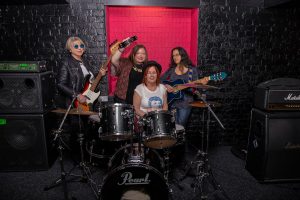
Equipment
Combo – short for combination amp. This could be a bass or guitar amp. It means that the amp and the speakers are together in the same unit
Head and Cab – refers to the head being the amp and the cabinet, which houses the speakers. They are connected with a cable
Drum Shells – these are the drum barrels, if a venue says they have a 3 piece is means a bass drum, a floor tom and a rack tom. A 4 piece means they will have 2 rack toms. Its not usual for a venue to provide a snare drum.
Hardware – this is the cymbal stands, snare stand, hi-hat stand, pedal and drum stool
Breakables – these are the cymbals and snare
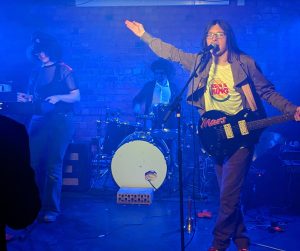
Job Roles
If the venue or the event is small then job rolls tend to be merged together but if its a busy event with a lot of bands playing it may be necessary to split up into individual rolls
Sound Engineer – Soundman/person – is in charge of mixing desk and will work with you during soundcheck to make sure you get the best sound for your band. They also will monitor and adapt the sound during your performance, you can communicate with them throughout your performance if you are struggling to hear aspects of your music.
Stage Manager – if it is a busy event with a lot bands performing there may be a need for a stage manager to keep things moving along and make sure the night runs on schedule. Smaller events don’t need this, they are generally run by the soundman and the bands themselves
Promotor – is the person who had organised the event
The Door – in this context it refers to the person at the front desk taking payment/ tickets . At small events this will be the promotor
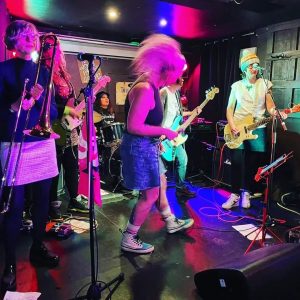
The Stage
Load In – this is the time you can arrive at the venue with your equipment
Sound Check – the soundman will work with each band in turn, started with the last on, working their way to the first on. With each band checking the sound of the instruments and vocals, making sure the sound will be good for the audience and also for the band on stage
Line Check – sometimes it isn’t always possible for each band to have a soundcheck, so the soundman will do a quick line check right before the band is due to go onstage. This is literally to check that everything is plugged in and working. The soundman will then mix the sound during the first song, adapting to the needs of the band.
Mix – this is the mixture of all of the elements in the sound, for example vocals, guitar, bass, snare, cymbals, bass drum etc
Checking the Levels – refers to the volume of each of the above elements in the mix
Feed back – this is when there is a sound loop that creates a harsh loud noise. For example a microphone pointing at a speaker will create this
PA – Personal Address is the venues speaker system,
Backline – is anything not part of the PA, for example guitar amps, bass amps, drumkit, keyboards
Mic’ed up – the process of setting microphones up in front of each of the amps so that the sound can be amplified through the PA system. This will also include several mics on the drums to capture individual sounds of eg, snare, bass drum, cymbals etc. This then allows the sound engineer to control the levels of each part of the drumkit individually
Vocal PA – is a PA just used for vocals and light instruments like keyboards or acoustic guitars. These are fine for small events like for example a room in a pub, where the volume of the individual amps and drumkit are enough for the over all sound
Front of House – is the PA or speaker system that the audience will hear of the bands performance
Monitors – are the speakers on the floor of the stage and this is the primary source of sound for the bands to hear themselves.
DI Box – is a small unit that the sound engineer uses to connect certain instruments to the PA, for example microphones, a keyboard, a laptop or synthesisers
DI In – is directly plugging your instrument into the PA via a DI box. This is often used for acoustic guitars so they don’t have to plug into an amp.
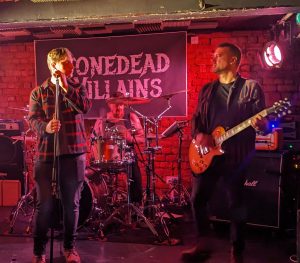
Performing
Line up – the list of bands that will be playing at the event
Change Over – the amount of time between one band leaving the stage and the next one to get ready on the stage
Set Times – the time each band is due on the stage
Set List – a list of the songs that you will be playing during your time on stage (set)
Opener – the first band to play at the event
Headliner – the main or last band to play at the event
Support – any bands to play before the last band
Curfew – the time the venue has to close
